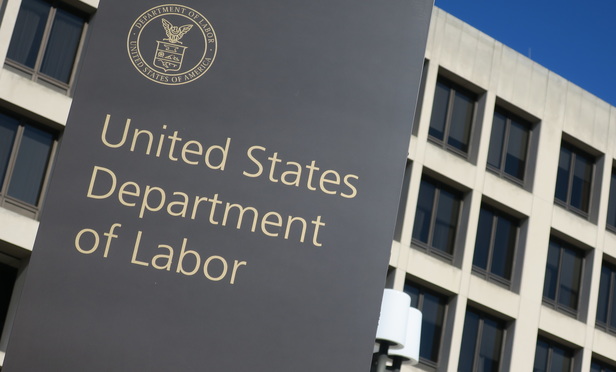 (photo: Michael Scarcella/ALM Media)
(photo: Michael Scarcella/ALM Media)
The Department of Labor, the Internal Revenue Service and the Pension Benefit Guaranty Corporation made final changes to 2023 Form 5500 and Form 5500-SF employee benefit plan reports this week. The changes, which take into account developments such as pooled employer plans (PEPs), could reduce filing costs by $95 million each year.
The Form 5500 Series is a compliance, research, and disclosure tool that contains information about a 401(k) plan's financial condition, plan qualifications, operation and compliance with government regulations. This is the third and final phase of changes to the forms proposed in 2021 to comply with the Setting Every Community UP for Retirement Enforcement (SECURE) Act.
Recommended For You
"The form changes and regulatory amendments, especially those on multiple-employer plan reporting, improve the Form 5500 as a critical oversight, public disclosure and policy data tool," said Assistant Secretary for Employee Benefits Security Lisa M. Gomez.
The Federal Register notices, Document #2023-02653 for the Notice of Final Forms Revision and Document #2023-02652 for Notice of Final Rulemaking, also include appendices that describe the changes to the forms and instructions as well as regulatory impact and paperwork burden analyses.
Related: DOL: More time to comment on agency's new 401(k) self-correction program
Plan sponsors must generally file 5500 forms on the last day of the seventh month after their plan year ends. The 2023 plan year reports, which will be filed beginning in mid-2024, include the following changes:
- A consolidated Form 5500 reporting option for certain groups of defined contribution retirement plans, improved reporting by PEPs and other multiple-employer plans;
- A change in the participant-counting methodology for determining eligibility for simplified reporting alternatives available to small plans, which are generally plans with fewer than 100 participants;
- A breakout of reporting on administrative expenses paid by the plan on the plan's financial statements;
- Further improvements in financial and funding reporting by PBGC-covered defined benefit plans;
- The addition of selected Internal Revenue Code compliance questions to improve tax oversight and compliance of tax-qualified retirement plans; and
- Technical and conforming changes as part of the annual rollover of forms and instructions.
Technical adjustments also were made to the Federal Register notices to address certain provisions in SECURE Act 2.0 of 2022 on Code section 403(b) multiple employer plans, including PEPs, minimum required distributions and audit requirements for plans in defined contribution group reporting arrangements.
Mock-ups of the forms and instructions will be available at reginfo.gov.
Kristen Beckman is a freelance writer based in Colorado. She previously was a writer and editor for ALM's Retirement Advisor magazine and LifeHealthPro online channel.
© 2025 ALM Global, LLC, All Rights Reserved. Request academic re-use from www.copyright.com. All other uses, submit a request to [email protected]. For more information visit Asset & Logo Licensing.






